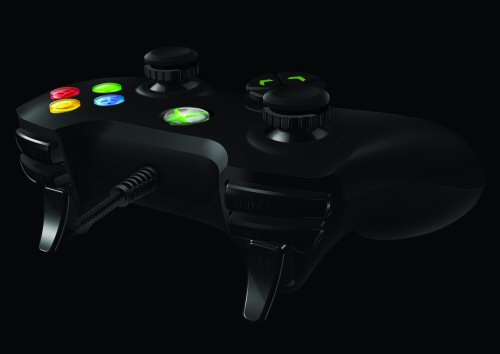Redesigned D-Pad and 2 Multi-Function Buttons
Razer also decided to split the d-pad into four sections, similar to Sony’s PlayStation 3 controller; though the four sections are more tightly compact and form a circle shape. You know exactly the direction you’re pressing with this kind of d-pad, which makes it great for weapon selection during shooters, or accessing spells during RPGs. However, I’ve found using the d-pad a little trickier with some games that require you to do more than just press it in a North, South, East or West direction. In FIFA 11, or Street Fighter IV, for example, where you need to manipulate the d-pad in all directions, I found it a little trickier to get those angles than with a circular d-pad. Nonetheless, d-pad design is often down to personal choice. While some prefer the circular style of the original Xbox 360 controllers, others should enjoy the fact that Onza's d-pad is slightly more raised and provides a more tactile feedback.The back-lit action buttons sitting on the right-hand side of the controller give you a great performance across all genres. Unlike the raised buttons on the official controller, they are flat on the Onza and require little pressure to activate. Initially, as you get used to the change in feel, it does seem a little strange as you’ll be used to pressing the buttons much harder. Because you need such a small touch to activate the action buttons, you don’t get that bounce back that you get from the official controller’s buttons – which to me always reassures me that I did press it. The Onza compensates for this by a ‘clicky’ sound that you hear every time you press an action button. The combination of shorter travel distance and minimized debounce time increases your performance allowing you perform actions quicker. I could see a real difference in the performance, particularly in hack ‘n slash games such as Bayonetta, where I was able to perform combos more quickly than with the official pad.

There’s also a noticeable difference to the feel of the triggers on the back of the pad compared to the official controller. I’ve only noticed this while reviewing the Onza, but whenever I’m playing a shooter with Microsoft’s official controller, I often hold my right trigger half-way down so I can activate it quickly when I need to. With the Onza, however, the travel distance is much shorter so I no longer need to do that. It’s a small design change, but a significant improvement that other third-party controller makers would be wise to follow.
The biggest change - and also the hardest feature to get used to - is the addition of two multi-function buttons (MFB) that sit on top of the controller parallel to the shoulder buttons. On the back of the controller, you can programme these buttons. Holding the remap button down activates an LED showing which button is currently configured to the corresponding MFB. Assigning a new button takes a matter of a few seconds and immediately you can access them via these new MFBs. The only downside is that the MFBs are tightly-packed together with the shoulder buttons and they can’t be turned off. It’s quite easy to accidentally clip the MFBs by mistake so to begin with it was a nightmare playing FIFA 11, where I constantly use the shoulder buttons. It took me a while to realise it, but I eventually remapped the shoulders buttons to the MFBs, so it doesn’t matter whether I accidentally press the wrong button. Nevertheless, this isn't the perfect solution, because unless you have fairly thin fingers it still takes a lot of getting used to to be able to move accurately between shoulder buttons and MFBs. However, this type of customisation is unheard of in the realm of 360 controllers, and Razer has provided a decent solution that puts you firmly in control of your layout.
The biggest feature of the Onza is the adjustable resistance on the analogue sticks. The Onza allows you to customise the analogue sticks on the fly via a small plastic ring that sits under the rubberized cap. You can twist the ring to tighten or loosen the resistance, which changes how much force you need to move the stick. This is great on the fly for precise aiming while sniping for example, or loosening it right up for racing games where you need to make some sharp turns. Once again, it's another indication that Razer is aiming the Onza at competitive gamers looking to gain any advantage they can over their enemy. In that respect, the Onza does its job very well.
Continued overleaf









